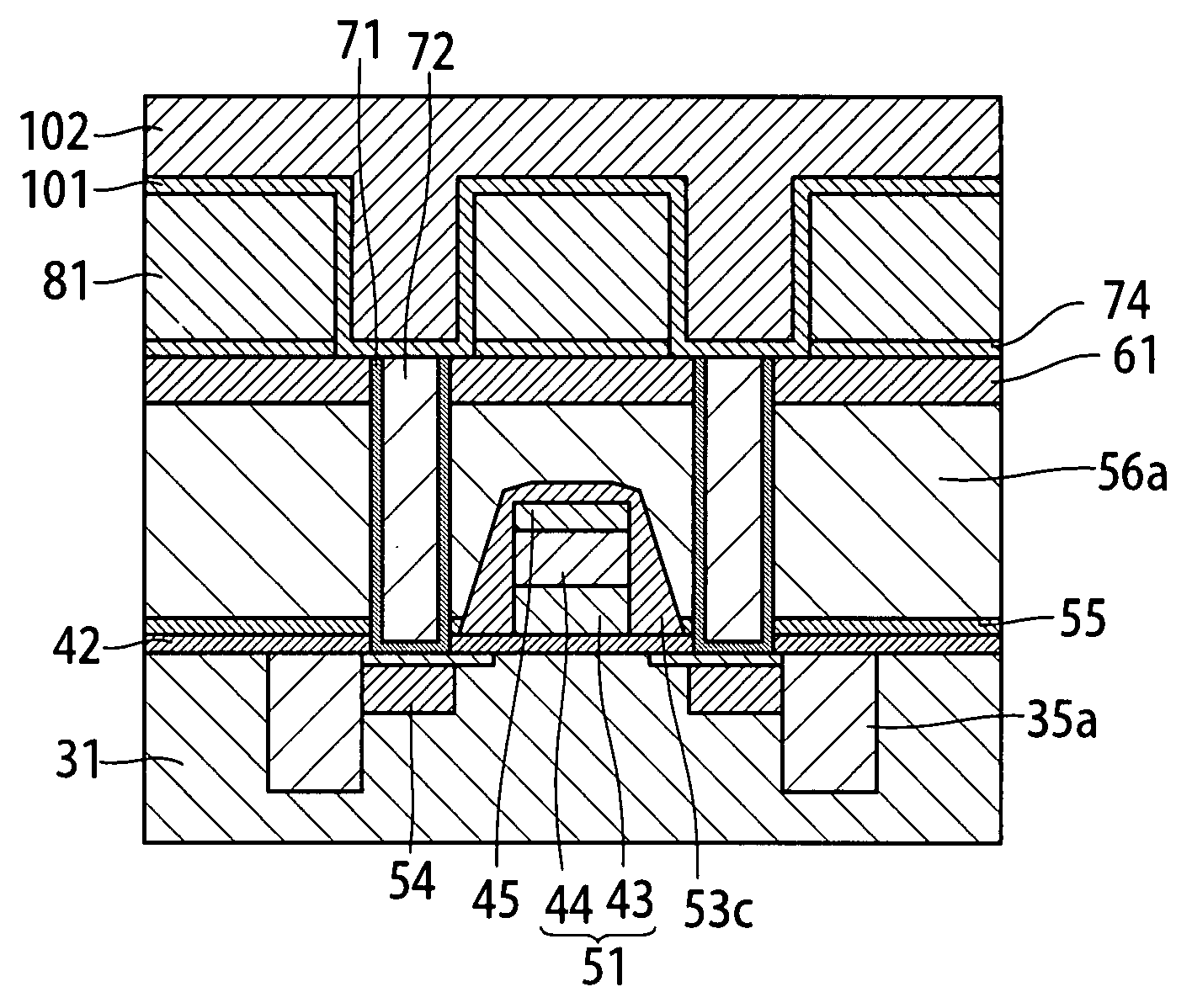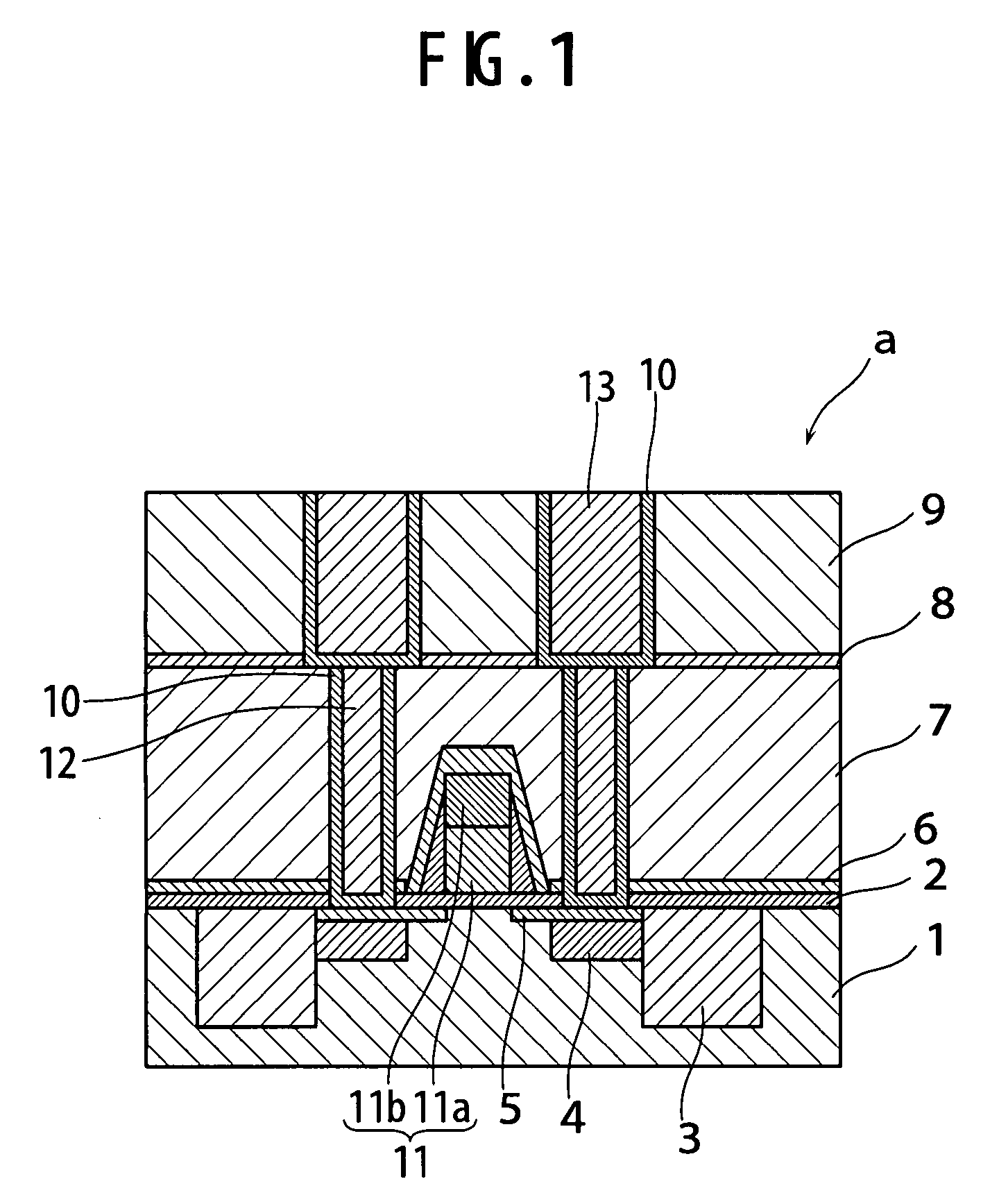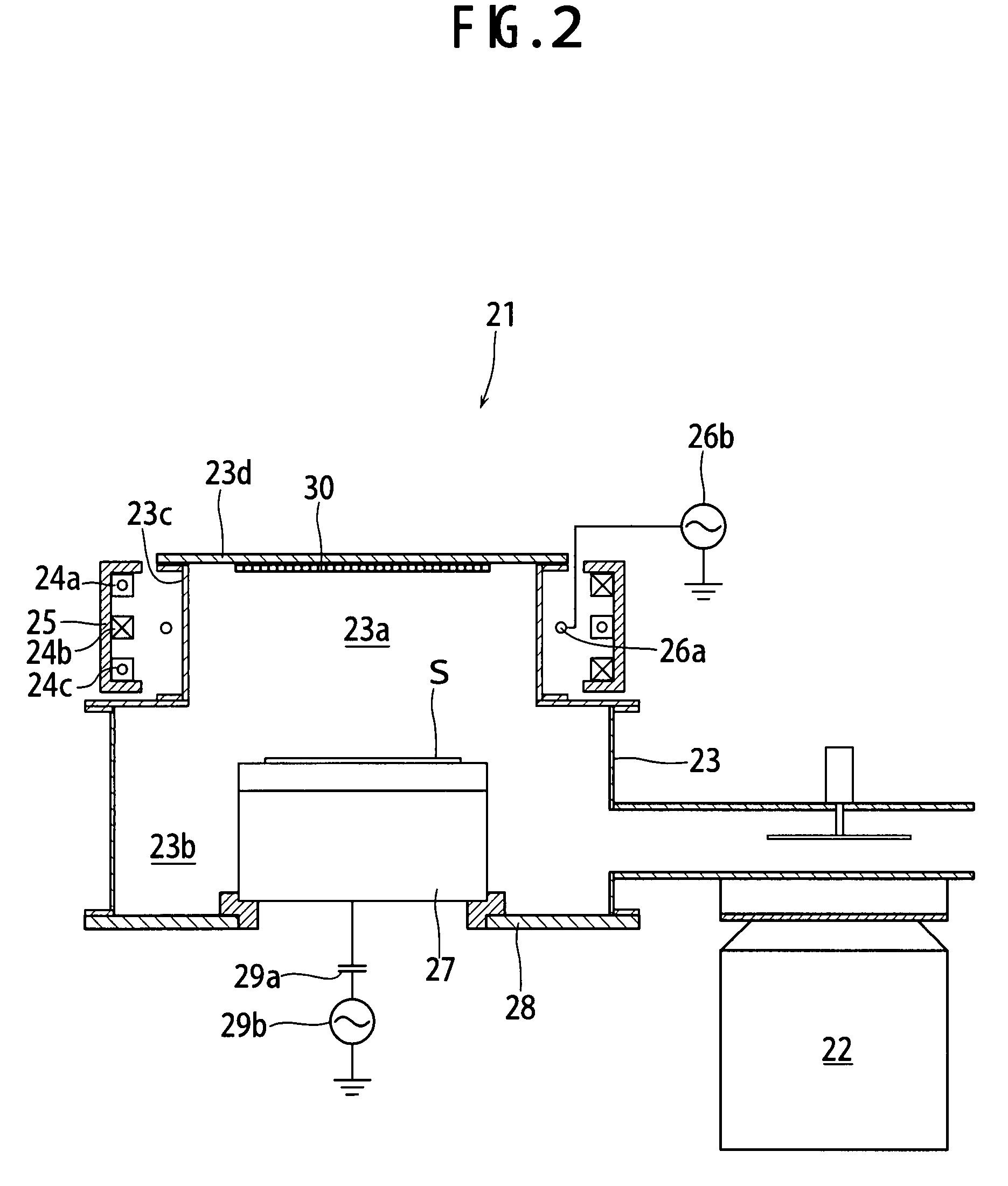Semiconductor device and method for manufacturing the same, dry-etching process, method for making electrical connections, and etching apparatus
a technology of semiconductor devices and resist patterns, applied in semiconductor devices, semiconductor/solid-state device details, electrical devices, etc., can solve the problems of reducing the manufacturing yield of semiconductor devices, achieve accurate etching of underlying materials, transfer resist patterns accurately onto underlying materials, and good yield
- Summary
- Abstract
- Description
- Claims
- Application Information
AI Technical Summary
Benefits of technology
Problems solved by technology
Method used
Image
Examples
example 1
[0096]In the present invention, in this Example, a dielectric film was prepared by growing (or depositing) an oxide film (TEOS-SiO2) on a silicon substrate (wafer) to a thickness of 300 nm using TEOS gas by plasma CVD.
[0097]An anti-reflection film and then a resist film for ArF-photolithography were successively coated such that the dielectric film was covered with these films. An electrical connection pattern containing grooves each having a width of 100 nm was formed thereon while using ArF-photolithography. Thereafter, the dielectric film covered with the resist film carrying this electrical connection pattern was subjected to dry-etching within a plasma atmosphere.
[0098]During etching, the dielectric film was etched by introducing Ar and C3F7I as an etching gas into the vacuum chamber 23 of the etching apparatus 21 at a pressure of 2.67 Pa to form grooves each having a width of 100 nm. The resist was then removed. At this stage, the flow rates of Ar, C3F7I gas and oxygen gas wer...
example 2
[0102]Example 2 is given for the explanation of a method for forming a Cu electrical connection pattern of a semiconductor device according to the Cu-damascene technique. The following description of the basic or essential parts of a process is for forming only one layer, but two or more electrical connection layers can likewise be formed by repeating the following procedures or adding some modifications thereto (see, for instance, FIGS. 12(a) to (c)).
[0103](1) First, a TEOS-SiO2 film 122a was formed on an Si substrate 121 in a thickness of 250 nm at a temperature of 400° C. using plasma CVD. A cap-SiN film 122b was grown thereon to a thickness of 50 nm.
[0104](2) An interlayer dielectric film 122c of TEOS-SiO2 on which Cu-electrical connections would be formed was formed on the SiN film 122b in a thickness of 200 nm at a temperature of 400° C. using plasma CVD. A plasma silicon nitride film (p-SiN) 122d as a CMP stopper was deposited on the dielectric film 122c to a thickness of 30 ...
example 3
[0129]Example 3 is given explaining the principal steps for accurately producing the gates included in the semiconductor device a according to the present invention. In this respect, FIGS. 13(a) to (c) and 13(a′) to (c′) schematically show respective cross-sectional views and top plan views of the semiconductor device obtained after the completion of these principal steps, respectively. In this connection, any known method can be used as, for instance, a dielectric isolation step of a transistor prior to the production of gates; a step for producing a gate-insulating film; a side wall-forming step after the etching of the gate-forming material; and a source and drain-diffusion step. Therefore, the description of these steps are herein omitted.
[0130](1) A gate oxide film 132 was grown on a silicon (Si) wafer 131 to a predetermined thickness and a doped amorphous Si (a-Si) film 133a was then formed at 500° C. using known CVD to a thickness of 200 nm.
[0131](2) A tungsten (W) film 133b ...
PUM
| Property | Measurement | Unit |
|---|---|---|
| width | aaaaa | aaaaa |
| relative dielectric constant | aaaaa | aaaaa |
| relative dielectric constant | aaaaa | aaaaa |
Abstract
Description
Claims
Application Information
 Login to View More
Login to View More - R&D
- Intellectual Property
- Life Sciences
- Materials
- Tech Scout
- Unparalleled Data Quality
- Higher Quality Content
- 60% Fewer Hallucinations
Browse by: Latest US Patents, China's latest patents, Technical Efficacy Thesaurus, Application Domain, Technology Topic, Popular Technical Reports.
© 2025 PatSnap. All rights reserved.Legal|Privacy policy|Modern Slavery Act Transparency Statement|Sitemap|About US| Contact US: help@patsnap.com



